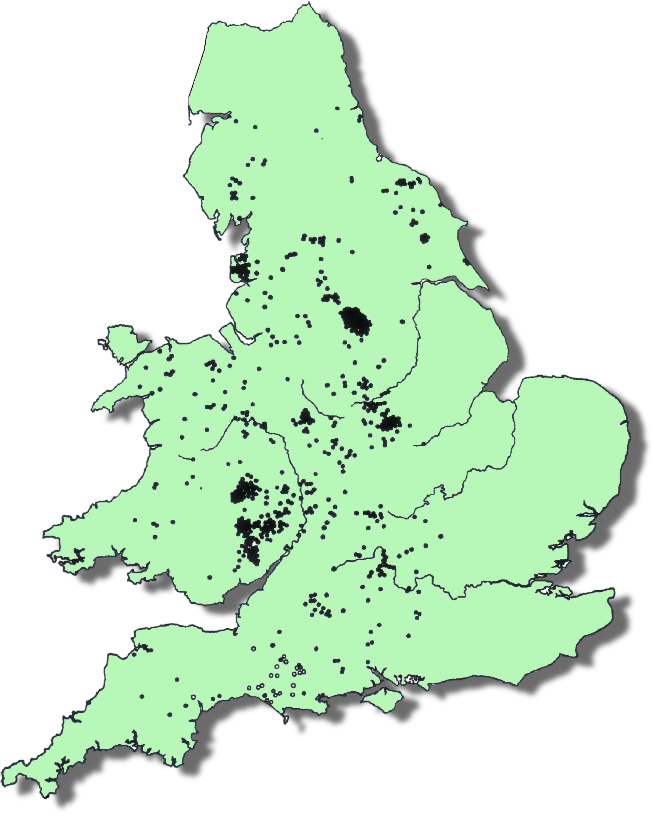No one seems to know where or when cruck-frame construction originated. Experts disagree as to whether it is indigenous or came from the Continent. From its distribution in the North and West, it is possible that it belongs to a Celtic tradition. The earliest extant examples are Medieval and the tradition continued into the eighteenth century.
The method of construction involves finding a suitable tree with a curved trunk or trunk and large main branch. This is then squared and cut in half lengthwise to produce two matching cruck-blades. These are then erected to form an A-frame with a main tie-beam joining the two blades and projecting out to the level of the eaves.
The advantage of this system is that the roof is wholly supported by the crucks. Since the walls are not load-bearing, they can be constructed of any available material and can easily be changed. Thus cruck-frame buildings which were originally timber-clad may later have been cased in stone or brick.


